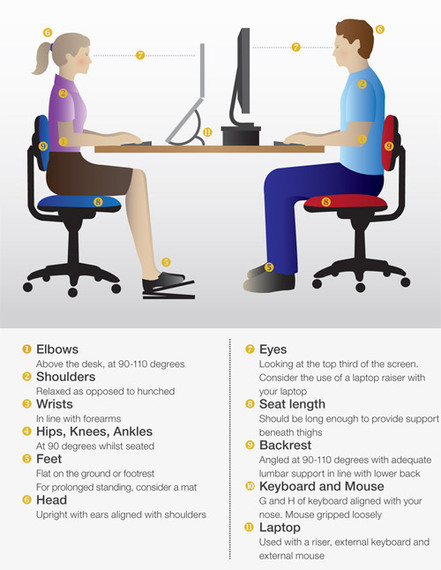Sitting is that time in high school when your parents walked in. Sitting is your friend who took the last slice of pizza even though you paid for the pie. Sitting is, according to experts, the lit cigarette stuck between your lips.
The negative side effects of sitting, both prolonged and immediate, are by now well known. In the past few years, there have been numerous articles and books sharing countless statistics. As a brief refresher, here are some facts.
As soon as you sit down, your calorie burning drops to one per minute. By sitting more than six hours a day, you're up to 40 percent likelier to die within 15 years than someone who sits less than three hours, even if you exercise. Sitting leads to a greater risk of colon, breast, and endometrial cancers, while causing tight hips, limp glutes, and soft bones.
Are you standing yet?
Even though 90 percent of adults claim to have experienced some level of back pain, it's also true that perpetually standing isn't a healthy solution, either. Nor is it realistic. Americans spend on average 60 percent of their waking hours sedentary, sitting approximately 9 hours a day.
So what to do? Sitting less is an obvious improvement. Some, like Dr. James Levine, recommend treadmill desks, which reportedly improve health and productivity. And anyone who's ever worked an office job knows the benefits of taking a lap every hour or so. But sitting is unavoidable. You can't pace up and down the aisle of an airplane during your flight, or in a theatre during the movie. In most culture's it's impolite to jog in place while eating a burrito. The solution is not simply sitting less; it's sitting better.
Consider the following image:
Look familiar? Now look at this image from the University of Western Australia, depicting proper posture.
While fixing your posture is the first step toward an improved relationship with the seated position, unfortunately it's not just sitting that does the damage. According to New York back surgeon Kenneth Hansraj, looking down at a cellphone is equivalent to placing a 60-pound weight on your neck, like giving a shoulder ride to an 8-year-old every time you text. Such strain is unnecessary. Raise your hands and arms from your lap to your chest. It will increase your head extension and improve your neck posture by taking away the unnecessary strain.
Other ways to remove strain? Don't be a potato. Take a walk. Do some pushups. Change your workspace to better accommodate your needs. But when you do inevitably sit back down, sit better.
Dr. Kelly Shockley recommends balls. Sitting on an exercise ball strengthens core muscles that stabilize your spine by providing an instability, automatically provoking your body to stay balanced. I recently launched a product, BetterBack, that allows you to effortlessly sit in perfect posture. It's lightweight and portable so you can throw it in your bag and make every chair you sit on throughout the day ergonomic. Dr. BJ. Hardick recommends an adjustable arm for your computer monitor, which helps create a desk set-up that facilitates better posture.
Here are a couple of other trusty tips from people with initials after their names.
1. Dr. Kevin Kita recommends putting your feet on a small foot stool or books about 4 to 6 inches high when you're on the computer or reading in a seated position. Most people lean forward with their neck and round their lower back when they're on the computer, or reading. Lifting your feet helps you lean back and alleviates the pain this can cause.
2. Dr. Dot Stein recommends weekly swim sessions. Three times a week will strengthen your core, naturally improving posture and spine health. When you're hurting, swing by a sauna. Heat alleviates musculoskeletal pain.
3. To correct "computer neck," Dr. Barry Marks recommends leaning your head back as far as it will go. You should feel tension where the skull meets your neck and at the base where your neck meets your shoulders. Hold the position for ten seconds. Repeat this exercise throughout the day. It loosens up the hinge points in your upper body to help reposition your head over your shoulders.
4. When watching TV or reading, Dr. Robert Gearhart Jr. recommends periodically lying on your stomach. Over time, this form of stretching or "passive exercise" helps maintain the natural curve in your spine. The body position emulates the famous Cobra yoga position that benefits posture, except now you can multitask. Bonus!

